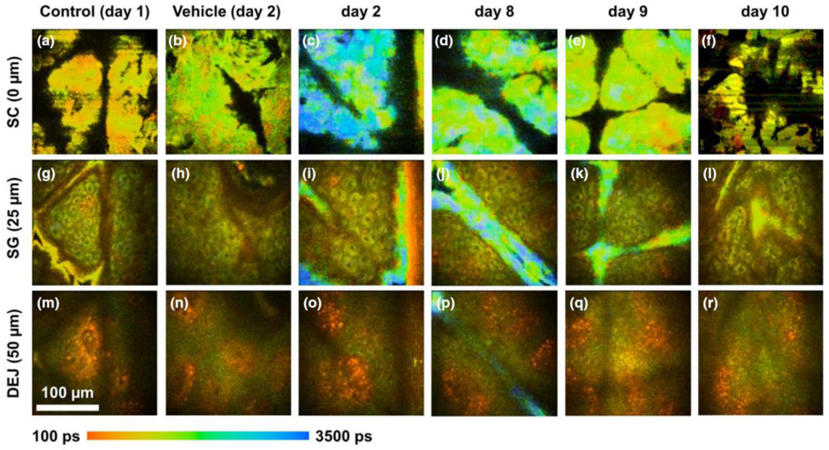Figure 5.

Example of in vivo 2PEF-FLIM data obtained with bi-exponential fit analysis to assess the distribution and residency of a topically applied fluorescent cream on human forearm skin. All blue regions with longer fluorescence lifetime indicate signal from the fluorescent drug. The FLIM images were acquired daily throughout the study and at three different skin depths: (a–f) stratum corneum (SC), (g–1) stratum granulosum (SG) and (m–r) dermal–epidermal junction (DEJ). On treatment days 2–7, most of the drug signal was detected on the skin surface (c, d). Accumulation of the topical formulation along skin ridges is also visible in images obtained on days 2, 8 and 9 (i, j, k, p). By day 10, there was no detectable fluorescence from formulation residing in the skin (f, l, r). Reprinted from with permission from [4].
